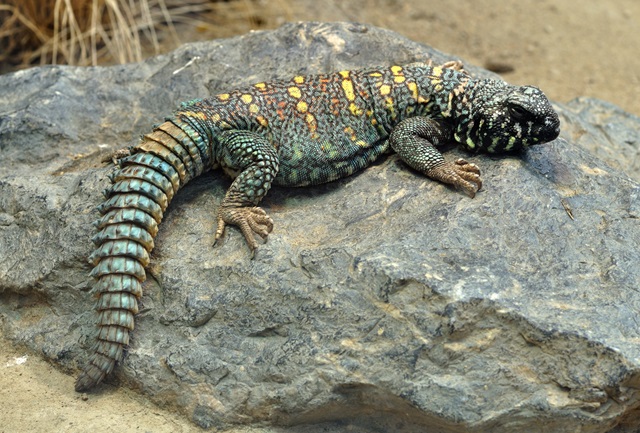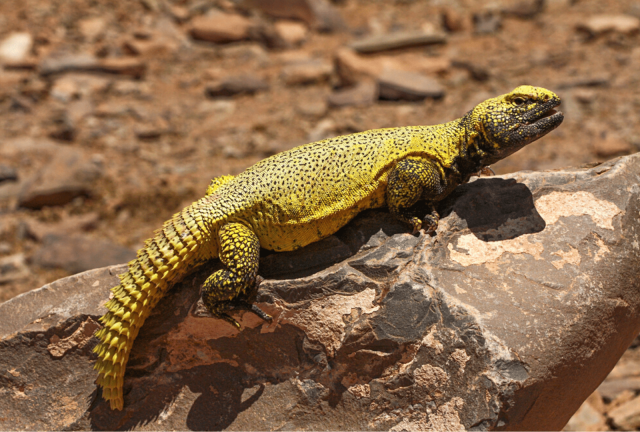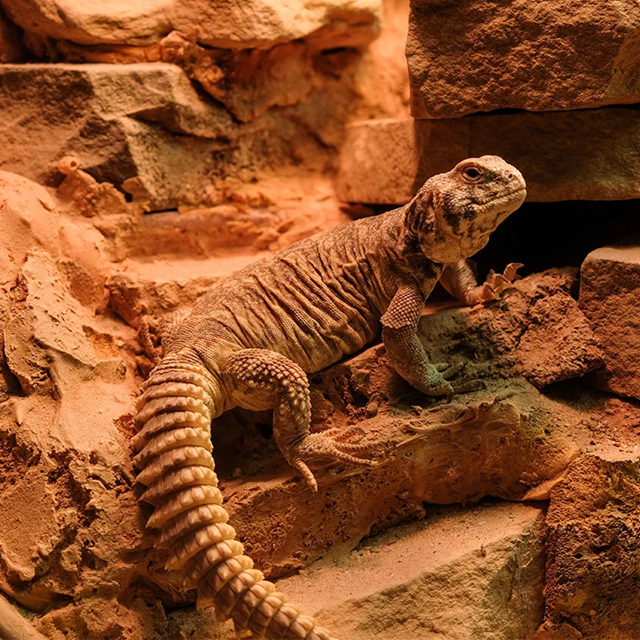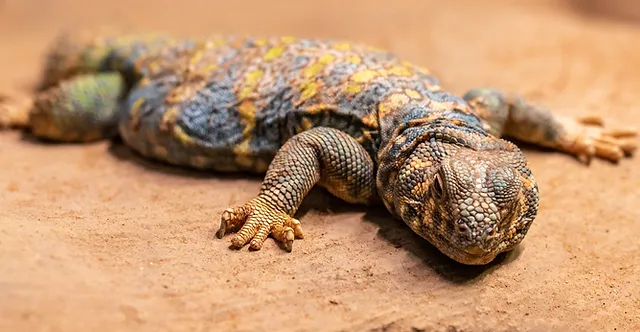The spiny tailed lizard, also known as Varanus acanthurus, is a fascinating and relatively small species of monitor lizard that has become increasingly popular among reptile enthusiasts. Native to Australia, this desert-dwelling species is known for its unique spiny tail, which not only adds to its distinctive look but also serves a defensive purpose. Whether you’re a seasoned reptile owner or a first-time monitor lizard enthusiast, this comprehensive guide will walk you through everything you need to know about caring for a spiny tailed lizard, from its habitat and diet to its behavior and health.

What is a spiny tailed lizard?
The spiny tailed lizard, or “Ackie Monitor,” is a part of the Varanus family, which includes some of the most impressive and well-known lizards in the world. However, compared to its larger relatives, such as the Komodo Dragon and the Savannah Monitor, the spiny tailed lizard stays relatively small, making it a more manageable pet for many reptile enthusiasts.
One of the most distinctive features of this species is its spiny tail, which is covered with sharp, rough scales. In the wild, this tail helps deter predators, and in captivity, it becomes a defining characteristic that sets this species apart from other monitors. The spiny tailed lizard’s color ranges from brown to reddish-brown, with darker spots and bands covering its body.
Why Choose a spiny tailed lizard as a Pet?
For those looking to keep a monitor lizard as a pet, the spiny tailed lizard offers many benefits:
- Manageable Size: Unlike larger species that require significant space, the spiny tailed lizard reaches an adult length of around 20–28 inches (50–70 cm), making it suitable for smaller living spaces.
- Active and Curious: This species is known for its inquisitive nature. spiny tailed lizards are active during the day and often explore their enclosures, making them fun to watch.
- Lower Maintenance: While still requiring specialized care, this monitor is generally easier to care for compared to larger, more demanding species like the Nile or Water Monitor.
Their docile temperament also makes them a better option for reptile beginners compared to other, more aggressive types of monitors. With proper handling and care, spiny tailed lizards can become friendly and accustomed to human interaction.

Spiny tailed lizard Care Guide
Enclosure Requirements
When setting up a home for your spiny tailed lizard, it’s essential to mimic its natural environment. Desert-like conditions with plenty of heat and dry substrate are ideal.
- Tank Size: Juvenile spiny tailed lizards can be kept in a 20-gallon tank, but adults require larger enclosures, around 4 feet long by 2 feet wide. The larger the enclosure, the better, as these monitors are very active and need space to move around.
- Temperature and Heating: A basking spot should be maintained at around 120°F (49°C), while the cooler side of the enclosure should be around 85°F (29°C). Use heat lamps and ceramic heaters to maintain the proper temperature gradient. Nighttime temperatures can drop slightly but should stay above 75°F (24°C).
- UVB Lighting: Like most reptiles, spiny tailed lizards need UVB lighting to metabolize calcium and stay healthy. A high-quality UVB light should be placed above the enclosure and should run for 10–12 hours a day.
Diet and Feeding Schedule
In the wild, spiny tailed lizards feed primarily on insects, small mammals, and occasionally other reptiles. In captivity, a similar diet should be followed to keep them healthy:
- Insects: The bulk of their diet should consist of crickets, roaches, and mealworms. Make sure the insects are gut-loaded and dusted with calcium powder to ensure proper nutrition.
- Occasional Treats: Pinky mice or small rodents can be offered occasionally as treats but should not make up the majority of their diet.
- Feeding Frequency: Juveniles should be fed every day, while adults can be fed 3–4 times a week.
Tank Setup and Maintenance
An ideal tank setup for a spiny tailed lizard includes:
- Substrate: A mix of sand and soil works well to mimic their desert habitat. The substrate should be at least 4 inches deep, as these monitors love to dig and burrow.
- Hiding Spots and Enrichment: Create multiple hiding places using rocks, logs, and commercial reptile hides. They also enjoy climbing, so providing branches and other structures can keep them mentally stimulated.
- Humidity and Ventilation: Keep humidity levels relatively low (30–40%), but provide a small water dish for drinking. Proper ventilation is essential to prevent mold and respiratory issues.

Lifespan and Growth of the spiny tailed lizard
How Big Do spiny tailed lizards Get?
spiny tailed lizards are considered small by monitor lizard standards. They typically grow to be about 20–28 inches (50–70 cm) in length, with males generally being larger than females. Their size makes them a much more manageable pet compared to other larger monitors.
How Long Do spiny tailed lizards Live?
With proper care, spiny tailed lizards can live for up to 15–20 years in captivity. The key to their longevity is maintaining optimal habitat conditions, providing a nutritious diet, and staying vigilant for any signs of health issues.
Common Health Issues and Prevention
While spiny tailed lizards are generally hardy reptiles, they can still experience certain health problems in captivity. Some of the most common issues include:
- Metabolic Bone Disease (MBD): A result of insufficient UVB exposure or calcium deficiency. Prevention involves providing proper UVB lighting and calcium supplements.
- Respiratory Infections: Often caused by high humidity or poor ventilation. Ensure proper airflow and maintain a clean environment to prevent this.
- Parasites: Regular vet check-ups and maintaining a clean enclosure can help prevent parasite infestations.

Where to Buy a spiny tailed lizard
Finding Reputable Breeders
When purchasing a spiny tailed lizard, it’s important to choose a reputable breeder. Avoid wild-caught monitors, as they may carry parasites or have difficulty adjusting to captivity. Look for breeders who can provide information on the monitor’s health and genetics.
What to Expect When Buying a spiny tailed lizard
The price of a spiny tailed lizard can vary, but they generally range from $200 to $500, depending on factors such as age, sex, and color. In addition to the cost of the lizard itself, expect to invest in the proper enclosure, lighting, and accessories.

Final Thoughts on spiny tailed lizards
The spiny tailed lizard is a wonderful pet for reptile lovers, offering an intriguing combination of manageable size, unique appearance, and engaging behavior. While they do require specific care, these monitors are relatively low-maintenance compared to other species. By providing a suitable habitat, a nutritious diet, and proper care, you’ll have a happy, healthy companion for years to come.
FAQs:
- What do spiny tailed lizards eat in captivity?
- They primarily eat insects like crickets, roaches, and mealworms, with the occasional pinky mouse or small rodent as a treat.
- How big do spiny tailed lizards get?
- They typically grow to be around 20–28 inches (50–70 cm) in length.
- How long do spiny tailed lizards live?
- With proper care, they can live for 15–20 years in captivity.
- Are spiny tailed lizards good pets for beginners?
- Yes, their small size and generally docile temperament make them a good choice for beginners who are willing to provide the necessary care.
- Yes, their small size and generally docile temperament make them a good choice for beginners who are willing to provide the necessary care.

